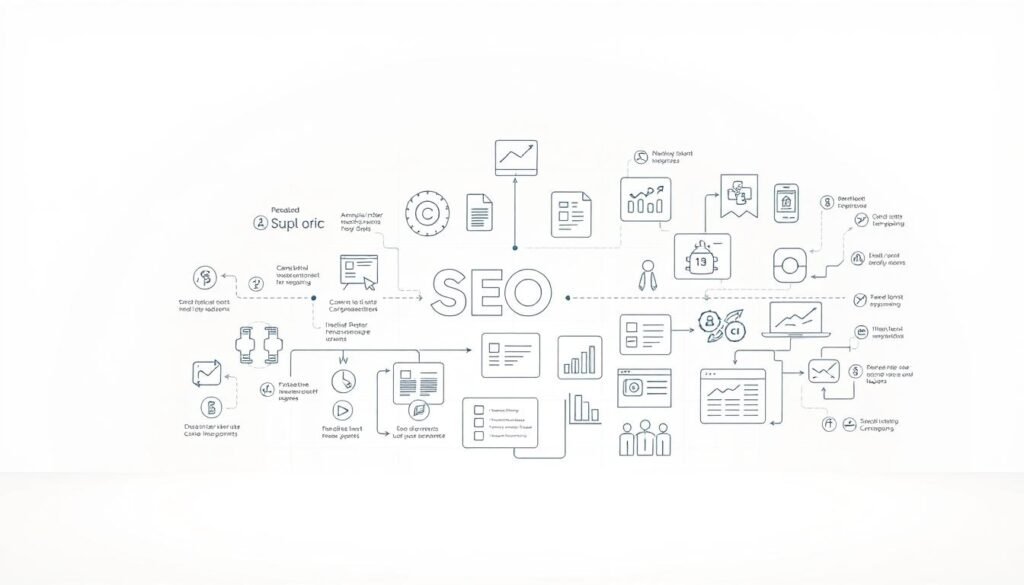How do web developer get better at what they do? It starts with mastering the essentials and never stopping there. In today’s fast-paced digital world, businesses rely on professionals who build fast, secure, and user-friendly websites. Whether you’re working on frontend interfaces, backend systems, or handling both as a full-stack developer, staying competitive means constantly growing your skills.
This industry evolves quickly—new frameworks, design trends, and rising user expectations push developers to adapt. Focusing on a specific area while gaining a solid understanding of related technologies increases your value. Frontend developers shape user experiences using HTML, CSS, and JavaScript, while backend specialists manage databases and server operations. Full-stack developers must balance both sides, requiring even deeper knowledge.
The key to improvement lies in continuous learning. Developers who stay current with tools like AI-assisted coding platforms or new performance optimization techniques stand out. And nothing beats building real-world projects to develop the kind of problem-solving mindset employers truly value.
Table of Contents
ToggleKey Takeaways
- Three core specializations define modern careers: frontend, backend, or full-stack development
- Technology advancements require ongoing education to maintain relevance
- Practical project experience accelerates skill mastery faster than passive learning
- Cross-disciplinary knowledge increases employability across industries
- Adaptability to new tools directly impacts earning potential and career longevity
The Evolving Landscape of Web Development
Digital innovation reshapes web creation every 12 months, demanding perpetual skill upgrades. Mastery requires tracking emerging frameworks while balancing core competencies. This dynamic environment rewards those who anticipate shifts rather than react to them.
Tracking the Pulse of Progress
Frontend specialists now face three dominant frameworks: React, Angular, and Vue.js. Each brings unique advantages for crafting responsive interfaces. Cloud-native architectures and serverless computing redefine backend possibilities, with tools like AWS Lambda changing deployment strategies.
Full-stack roles increasingly demand knowledge beyond traditional web stacks. Mobile integration, DevOps pipelines, and AI-assisted coding tools become standard expectations. Employers seek professionals who bridge multiple disciplines, as cross-functional teams dominate modern workflows.
Shifting Professional Expectations
User experience standards now prioritize lightning-fast load times and intuitive navigation patterns. Progressive Web Apps (PWAs) blend mobile and desktop capabilities, requiring updated development approaches. Database technologies evolve too, with options like Firebase simplifying real-time data syncing.
Staying relevant means engaging with coding communities through platforms like GitHub or Stack Overflow. Technical blogs from industry leaders offer early insights into upcoming trends. Practical experimentation with new libraries often proves more valuable than theoretical study alone.
Determining Your Web Development Niche
Your ideal web development path emerges when technical skills align with personal interests. Specialization increases efficiency and job satisfaction, but requires honest self-evaluation. Start by asking: “Does creating visual interfaces energize me more than solving server-side challenges?”
Assessing Your Interests: Design vs. Code
Front-end specialists thrive on crafting pixel-perfect layouts using CSS frameworks like Tailwind. If color theory discussions excite you more than database optimization, focus on UI/UX principles. Backend enthusiasts often prefer architecting APIs or working with systems like Node.js.
Full-stack roles demand versatility but offer broader project ownership. “The best developers follow their curiosity,” notes a tech lead at GitHub. Test both domains through simple apps—build a responsive landing page, then create a basic CRUD API.
Exploring Different Frameworks and Tools
Compare JavaScript libraries by rebuilding the same feature in React, Vue, and Svelte. Track which workflow feels intuitive. Backend explorers might contrast Python’s Django with Ruby on Rails for rapid prototyping.
Hands-on experimentation reveals preferences faster than tutorials. A designer-turned-developer shared: “Animating components in Framer Motion cemented my front-end passion.” Document your experiences to identify patterns in what engages you most.
how do web developer get better at what they do
Mastering web development demands consistent practice and collaborative growth. While tutorials provide foundations, true expertise emerges when tackling tangible challenges. Start small—automate repetitive tasks or redesign local business websites to sharpen your problem-solving skills.
Building Real-World Projects and Experimenting with Code
Create tools addressing personal needs—a budget tracker or recipe organizer. These building websites exercises teach practical debugging and feature prioritization. One GitHub contributor noted: “My portfolio grew fastest when I stopped copying tutorials and built my own flawed prototypes.”
Share projects on platforms like Dev.to for peer reviews. Constructive criticism reveals blind spots in code structure or security practices. Diverse projects—from Chrome extensions to API integrations—develop adaptable thinking patterns crucial for modern development roles.
Leveraging Mentorship and Team Collaboration
Join coding teams where experienced people review pull requests. Agency environments accelerate learning through pair programming and codebase walkthroughs. A junior developer reported: “Watching seniors troubleshoot live issues taught me more than six months of solo study.”
Participate in hackathons or open-source initiatives. Collaborative environments expose you to alternative approaches and industry-standard workflows. Regular feedback loops transform theoretical knowledge into polished, production-ready skills.
Invest in Continuous Learning and Self-Improvement
Staying ahead in tech requires more than occasional updates—it demands a structured approach to growth. Professionals who improve skills systematically outpace competitors through curated learning paths and hands-on experimentation. This journey blends formal education with real-world application.
Fuel Growth Through Structured Education
Online platforms like Coursera offer certifications in emerging fields like AI integration. Technical documentation provides critical insights—Mozilla’s MDN Web Docs receives 92% approval from developers for accuracy. “Reading specs reveals edge cases tutorials never cover,” notes a React core contributor.
| Method | Time Investment | Skill Impact |
|---|---|---|
| Interactive Courses | 4-6 hrs/week | Foundational Knowledge |
| Documentation Study | 2-3 hrs/week | Technical Precision |
| Project Experiments | 5+ hrs/week | Practical Mastery |
Showcase Progress Strategically
Update portfolios quarterly with new things you’ve built—dynamic filtering features or performance optimizations. One developer landed a Fortune 500 role by demonstrating 47% faster load times across three case studies.
Seek peer reviews through CodePen collaborations or LinkedIn groups. A recent survey shows 68% of hiring managers prioritize candidates with community-vetted work. Balance learning methods: 70% practice, 20% theory, 10% networking creates sustainable growth.
Creating Business Value Through Code and User Experience
Value-driven development bridges technical execution and organizational success. While writing functional code remains essential, professionals who connect their work to measurable outcomes deliver superior results. Start by mapping every feature to specific business needs before writing a single line.
Aligning Solutions with Strategic Goals
Analyze client objectives through stakeholder interviews and market research. A healthcare portal requires different UX patterns than an e-commerce website. One fintech team increased conversions by 34% by prioritizing fast checkout flows over complex animations.
Performance Optimization Essentials
Speed directly impacts user retention. Google studies show 53% of mobile visitors abandon sites taking over 3 seconds to load. Implement these core optimizations:
| Factor | Tools | Impact |
|---|---|---|
| Image Compression | Squoosh, WebP | Reduces page weight by 60%+ |
| Code Splitting | Webpack, React.lazy | Cuts initial load time by 40% |
| Caching Strategies | Service Workers | Improves repeat visit speed by 70% |
Data-Informed Development Practices
Track user behavior through tools like Hotjar to identify friction points. A/B test navigation layouts before finalizing designs. “Analytics revealed our contact form was too hidden,” shared a SaaS developer whose redesign boosted leads by 28%.
Build scalable applications using cloud services like AWS Lambda. This ensures your website adapts as client demands evolve. Partner with marketing teams to align technical decisions with campaign goals for unified results.
Collaborating, Open Source, and Community Engagement
Tech careers thrive on collective knowledge sharing. Engaging with communities accelerates growth while expanding professional influence. Platforms like GitHub host thousands of projects where coders refine their craft through real-world contributions.
Contributing to Open-Source Projects and Communities
Start by fixing minor bugs in documentation or improving test coverage. These low-risk tasks build confidence while showcasing your skills to maintainers. A React contributor shared: “My first pull request led to mentoring opportunities with senior engineers.”
Align contributions with your expertise—frontend specialists might enhance UI libraries, while backend-focused developers optimize API integrations. Platforms like freeCodeCamp offer curated lists of beginner-friendly repositories. Consistent participation demonstrates problem-solving abilities to potential employers.
Networking with Peers and Learning from Industry Leaders
Join Discord servers or attend virtual meetups hosted by framework communities. Share your work-in-progress designs for feedback—many people offer actionable suggestions. One Angular user landed a job after redesigning a popular component library.
Follow tech influencers on X (Twitter) for industry insights. Participate in code review sessions or live-streamed hackathons. These interactions expose you to diverse coding styles and emerging best practices. Community engagement often reveals unadvertised roles or freelance opportunities.
hether you’re starting a blog, launching an online store, or creating a business website, we’re here to help. We design fast, secure, and mobile-friendly WordPress websites tailored to your brand and goals.
🚀 Custom design
🔧 SEO-ready & easy to manage
🔒 Secure & optimized for performance
📩 Get in touch today and let’s bring your vision to life!
Conclusion
The path to mastery in web development lies at the intersection of innovation and daily growth. Every line of code shapes tomorrow’s digital experiences, from responsive websites to enterprise-scale applications. Prioritize hands-on projects that solve real challenges while staying curious about emerging technologies.
Collaboration fuels progress in this field. Engage with peers through code reviews or open-source contributions to refine your problem-solving approach. Balancing technical skills with user-centric design creates lasting value for clients and end-users alike.
Adaptability remains your greatest asset in an evolving tech landscape. Schedule regular learning sessions to explore frameworks like SvelteKit or Deno. Track industry shifts through trusted blogs and community discussions.
Success thrives when technical excellence meets strategic thinking. Align your work with measurable business outcomes while maintaining physical and mental stamina. The most effective developers evolve alongside the tools they use, leaving room for experimentation amid structured growth.











